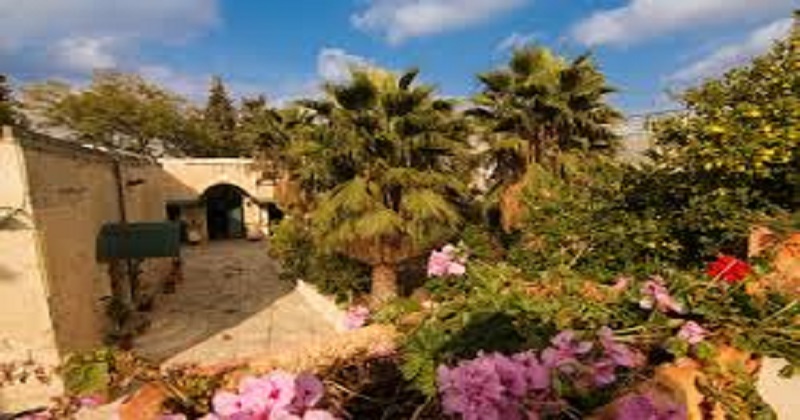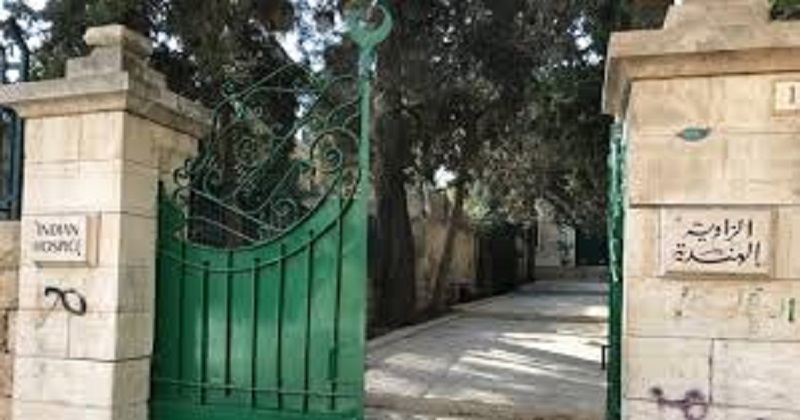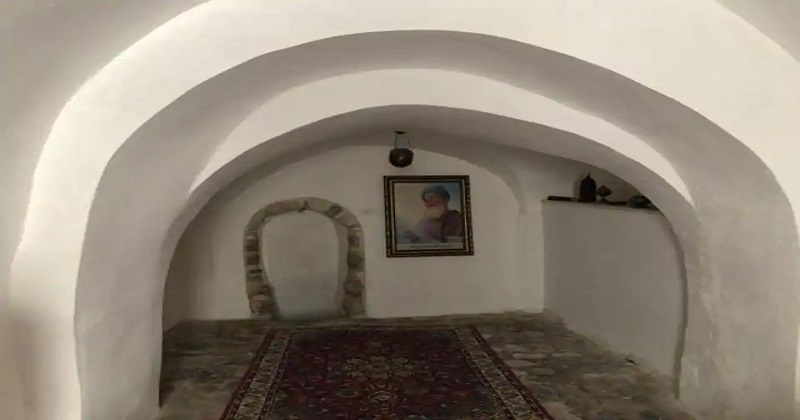
An Indian Hospice inside Jerusalem’s Old City !!! It is a ‘little India’ concealed in the Muslim quarters of the old city. This 7,000 square meter area is an unbiased and peaceful place standing in sharp contrast to the heartbreaking arguments of the land it is encircled by. Near to Herod’s Gate, an old entry to the Muslim Quarter, the green gate carrying the name ‘Indian Hospice’ is seen.

It is considered that Sufi Saint Baba Farid from India arrived in the Holy city of Jerusalem in the year 1200, and meditated in a cave for 40 days and since then, Muslim pilgrims from India on their journey to or from Makkah would halt and pray at the place. For almost a century, the Ansari family originally from Saharanpur in Uttar Pradesh has been taking care of this area.

Past the arched gateway, after the fruit and vegetable stalls, a breakout of stairs guides to a big iron gate painted green, crafted by pillars of white stone on which are carved in English, ‘Indian Hospice’ and in Arabic, ‘Zawiya al-Hindi’. ‘Little India’ is an unbiased junction in the theatre of the world’s most heartbreaking conflict, doubtful to ever be settled. The history of the hospice goes around 1200 CE, when the Sufi mystic Fariduddin Ganj-i-Shakar, or Baba Farid, visited Jerusalem. He stayed in a waqf premise that included two rooms and a mosque on a small hill opposite Bab al-Zahera, praying in solitariness for 40 days in a cave on the location.
The premises, which later came to be known as Zawiya al-Faridiya, became a sanctum for Indian Muslims journeying to the Holy Land. Over the centuries, contributions and sales of land helped develop the hospice to its current 7,000 sq meters. Pilgrims and tourists at the hospice today are exclusively Indian, often suggested by India’s tactful assignments in Tel Aviv and nearby capitals. They remain in modest rooms constructed around a courtyard at the base of which stands lemon and orange trees heavy with fruit and bordering to a private mosque and Baba Farid’s holy sanctuary, a large portrait of the saint protecting the entry to his cave. Baba Farid, incidentally, is said to have died in 1265.

Since 1952, the guardian of the Indian hospice has been Sheikh Mohammad Munir Ansari, the son of Sheikh Nazir Hassan Ansari, a member of the All-India Khilafat Committee who traveled to Jerusalem from Saharanpur in UP in 1924 at the request of the Grand Mufti of Palestine to be the trustee of the Indian Wakf and sheik of the Indian hospice. Sheikh Munir is now 91 and lives with his family all except one member of which carry Indian passports at the hospice. He is a recipient of the Pravasi Bharatiya Samman, awarded by the President to notable Overseas Citizens of India, and someone nearly every Indian dignitary visiting Israel makes the effort to meet.

“Recently, he took our entire family, more than 30 members, to Saharanpur in Uttar Pradesh it was a homecoming he wanted us all to experience,” says Nazeer Ansari, the Sheikh’s younger son, who handles most of the matters of the hospice today, with his wife, Wafa. For almost a century, four generations of the Ansari family have seen the hatred, prejudice, violence, and fuss of multiple wars and two Intifadas(the Palestinian uprising against Israeli occupation). Through the political upheaval, despite personal upsets and extensive injury to the hospice, they have maintained the Tricolour flying on Zawiyat al-Hunood Street. Through firmness and elegance, benevolence and tactfulness, Sheikh Munir has assured a constant Indian existence in the most battled 1-sq-km patch of land in the world.
“Please remember your visit,” he says. “And tell your sons, your daughters, your relatives, that you went to Jerusalem, the holiest city in the world, and that you visited the Indian hospice and the Ansari family, which comes from India… Bahut bahut shukriya.” Shukriya to you, Sheikh Munir.

Post Your Comments